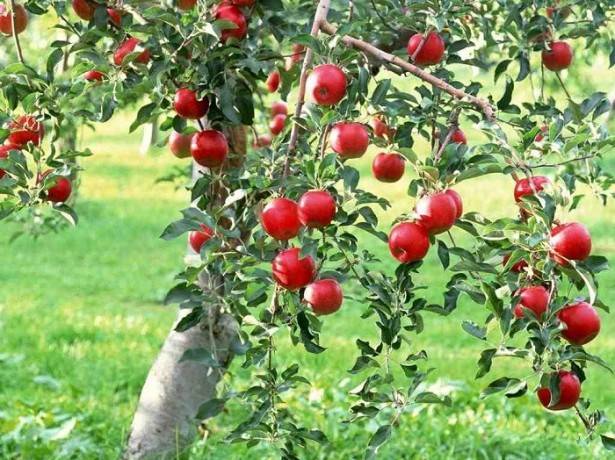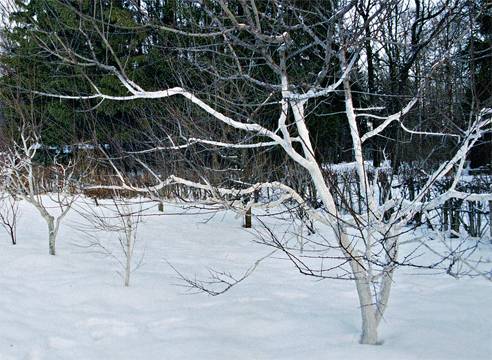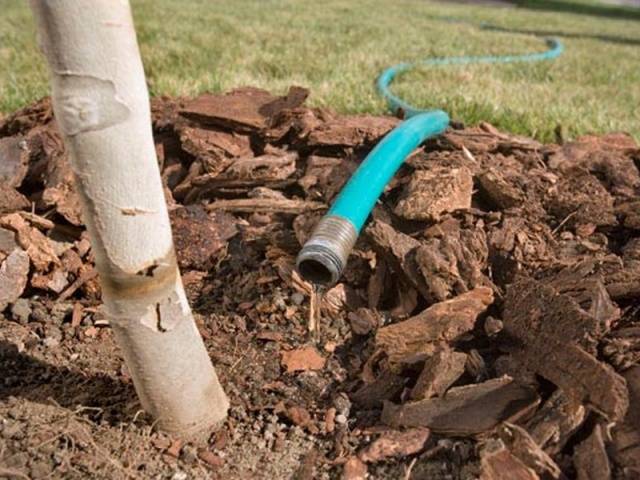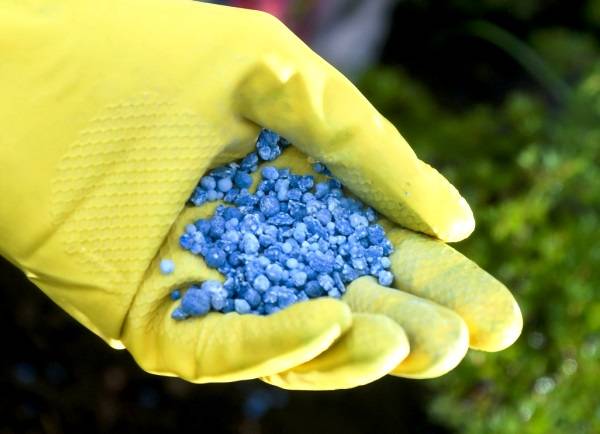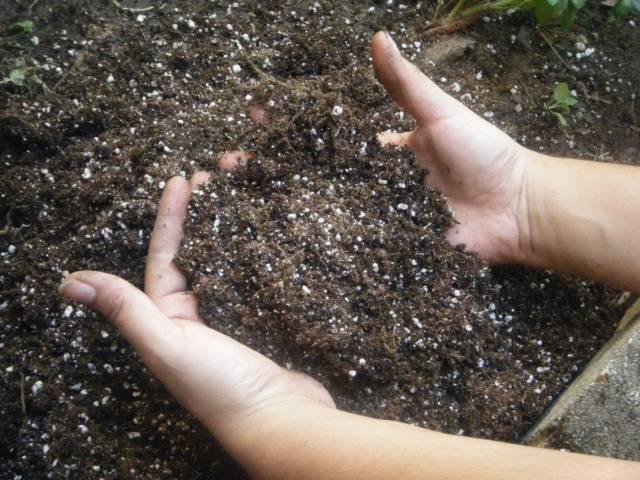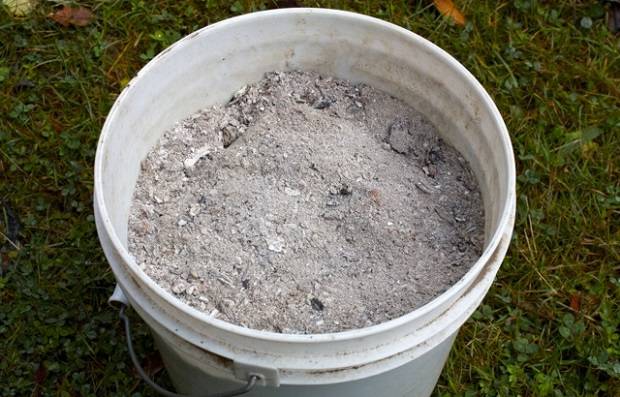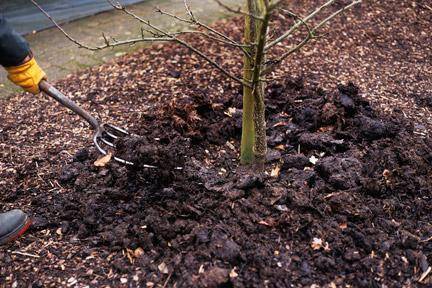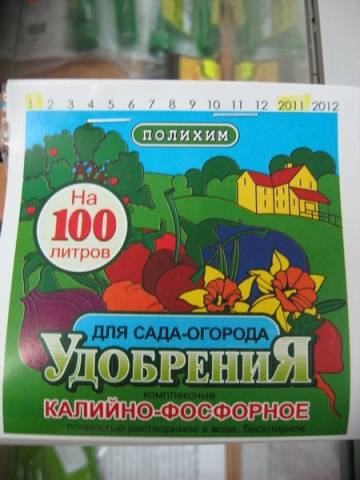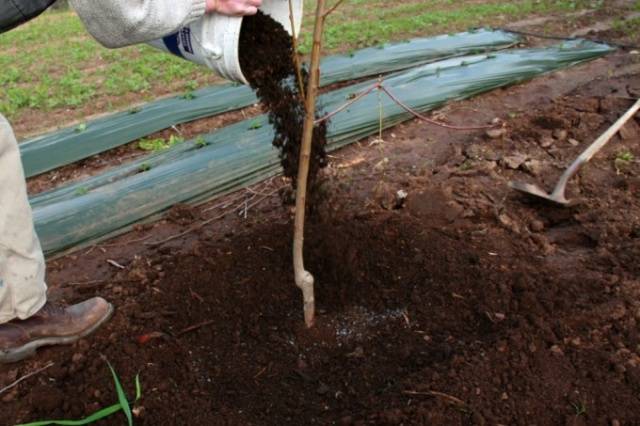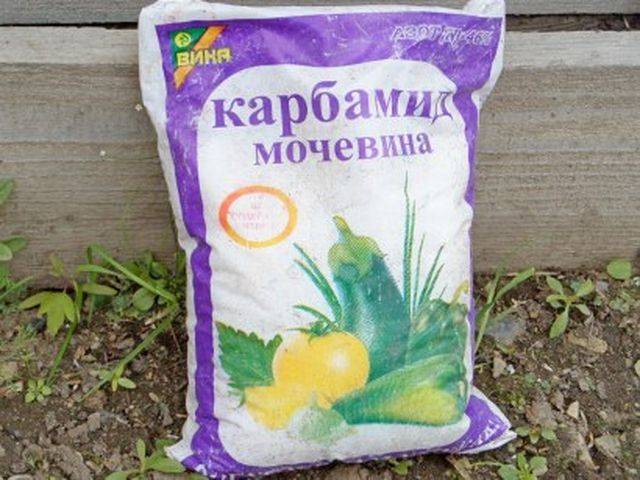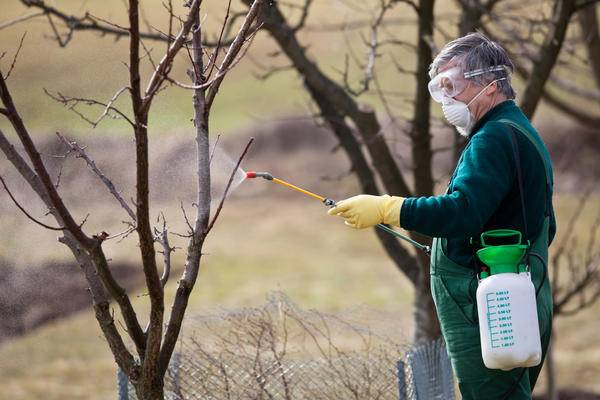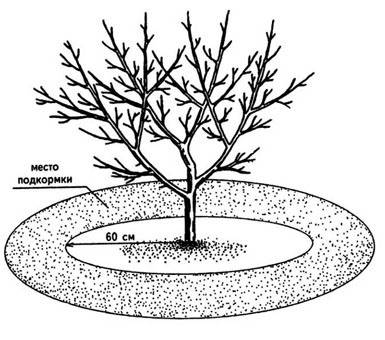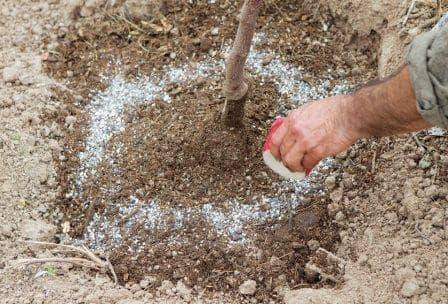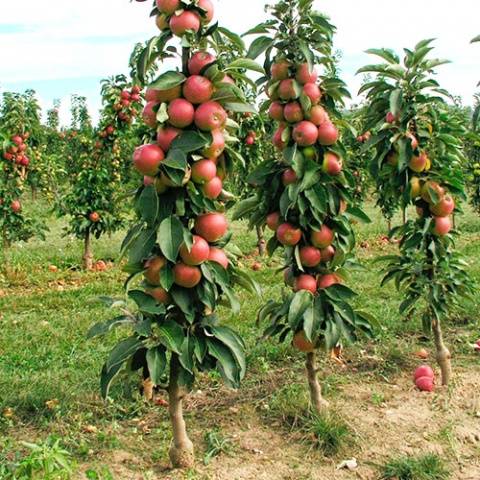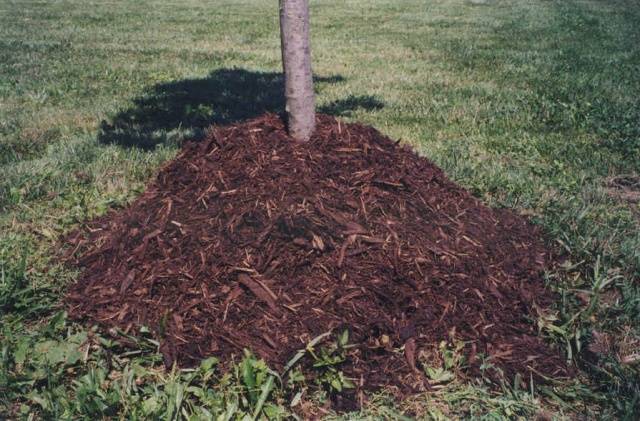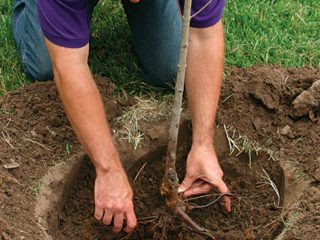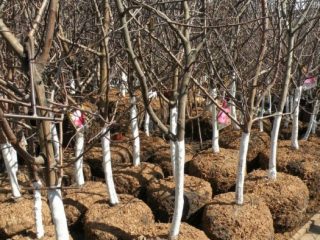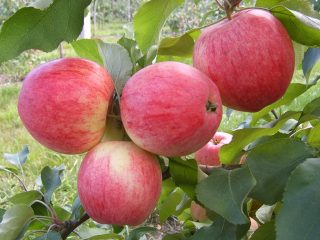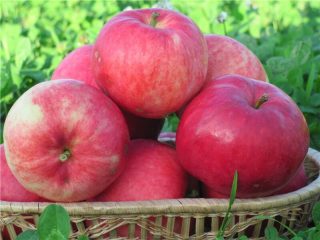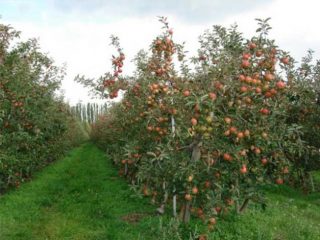Content
- 1 Why fertilize an apple tree in the fall?
- 1.1 When to fertilize
- 1.2 Tree preparation
- 1.3 How to fertilize
- 1.3.1 How to fertilize apple trees depending on soil composition
- 1.3.2 Mineral fertilizers: dosage and rules of application
- 1.3.3 Organic fertilizers: how much and how to apply correctly
- 1.3.4 Features of fertilization depending on the age of apple trees
- 1.3.5 The volume of fertilizers depending on the variety
- 2 Conclusion
There is hardly a single garden plot where this unpretentious and unusually productive tree does not grow. Thanks to their ease of care, apple trees grow in almost any region of Russia. But not every gardener pays due attention to them in the autumn. Most are limited to harvesting and cleaning the garden. Few people know that, in addition to mandatory annual work, it is necessary to help trees accumulate nutrients and prepare for winter. And feeding apple trees in the fall will help with this.
Why fertilize an apple tree in the fall?
If you want to continue to receive abundant harvests in subsequent years, help the fruit trees regain their strength. Contrary to popular belief, they need to be fed not only in spring and summer. Autumn fertilization is no less important. Feeding apple trees with fertilizers in the fall has its advantages:
- Restoring the balance of nutrients after heavy fruiting;
- Preparing apple trees for winter;
- Strengthening the root system;
- Increased frost resistance;
- Increasing the resistance of fruit trees.
The most important is autumn feeding of apple trees in northern regions with long winters and severe frosts.
When to fertilize
It is very important to fertilize fruit trees on time. Apple trees need to be fertilized immediately after standard work in the garden - pruning and whitewashing. It is advisable to combine this process with pre-winter watering. In this case, all applied fertilizers will be absorbed to the maximum extent.
Feeding should be completed before mid-to-late September, depending on the region of growth. Consider a very important point when determining the timing: for the fertilizers to be completely dissolved and absorbed, the apple trees will need at least 3-4 weeks. During this entire period, provide the trees with abundant watering. If autumn is generous with precipitation, in this case there is no need to water the apple trees.
Tree preparation
Before applying fertilizer to the apple trees, it is necessary to restore order in the garden. After harvesting, collect all debris and leaves. It is advisable to remove it from the site and burn it to prevent the possibility of the spread of diseases, as well as to destroy numerous insects and their offspring.
After pruning trees in autumn, do not forget to treat the cut areas with garden varnish.
Carry out mandatory spraying of apple trees in the fall to destroy pests and prevent diseases.
In the autumn, after harvesting, you can use more concentrated and powerful solutions for processing without fear of harming the trees.
If you do not want to use chemical-based products for the prevention and control of pests and diseases, you can use solutions prepared yourself. Folk remedies will help you with this. Various infusions and decoctions protect trees no worse than store-bought chemical compounds.
Only after this can you begin autumn feeding, taking into account the climatic characteristics of your region. After the measures taken, at least 3-4 weeks must pass before frost hits and snow falls. The colder the soil, the slower the root system of the apple tree absorbs mineral fertilizers.
How to fertilize
When choosing fertilizers, you need to focus not only on the seasonality of work. An important role is played by the age of the apple trees, their variety and, of course, the chemical composition of the soil. How to feed an apple tree in the fall? How to correctly calculate the dosage depending on the variety and age of trees? What weather should these events be held in? You will find answers to these and many other questions in this article.
In autumn, apple trees need to be fertilized with fertilizers based on phosphorus and potassium. Nitrogen fertilizers should be abandoned in the autumn so as not to provoke the formation and growth of young shoots. They will not survive the winter and are guaranteed to freeze. And their appearance and active growth will significantly weaken your apple trees before the onset of frost and they will most likely freeze out.
How to fertilize apple trees depending on soil composition
Before you deposit autumn fertilizer for apple trees, you need to pay attention to the acidity level of the soil in your area.Increased acidity or alkalinity of the soil, even with careful and timely care, immediately affects fruiting. An outwardly healthy and abundantly flowering apple tree bears fruit very sparingly.
If the acidity level exceeds the norm, then the soil needs to be deacidified. To do this, add the following to the root zone and along the perimeter of the crown:
- Chalk;
- Slaked lime (fluff);
- Wood ash;
- Dolomite flour.
Of all the above fertilizers, gardeners deservedly consider wood ash to be an ideal fertilizer. It not only perfectly normalizes the acid balance, but also enriches the soil with potassium and phosphorus.
Any of the elements you have chosen must be scattered around the apple tree and carefully dig up the top layer of soil with a pitchfork. You shouldn’t go too deep when digging, so as not to damage the roots of the tree.
If alkaline values are high, the composition of the soil can be normalized using sawdust or peat.
Mineral fertilizers: dosage and rules of application
In autumn, when the growing season is coming to an end, apple trees most need potassium-phosphorus supplements. It is best to apply fertilizers in dry weather.
Make shallow grooves around the perimeter of the crown. Pour the required amount of fertilizer into them and carefully level the ground. Water the apple trees thoroughly. In the absence of precipitation, do not forget to water the trees at least 2-3 times a week so that the applied fertilizers are completely dissolved.
For one apple tree you will need:
- Potassium fertilizers – 15-20 g per m²;
- Phosphorus fertilizers - 40-50 g per m² of tree trunk circle.
When applying fertilizer, consider the age of your trees.An overdose is no less dangerous than a lack of nutrients.
Organic fertilizers: how much and how to apply correctly
At all times, humus, humus and manure are rightfully considered the best fertilizers of organic origin. Gardeners advise adding organic matter not only to the tree trunk, but also to the entire area occupied by the roots. You can determine the area of soil that needs to be fertilized in the summer. At noon, the shadow from the crown of the apple tree outlines the approximate area of root growth.
There are two methods of feeding apple trees in the fall:
- Foliar;
- Root.
Organic fertilizers can be fed to young apple trees in the fall when planting. In this case, the root system will not be damaged, and the seedlings will grow much faster and have time to gain strength and nutrients before the onset of winter.
Mix well-rotted organic matter in a 1:1 ratio. Place part of this mixture at the bottom of the planting hole. Bury the seedling with the rest of the soil and water it generously.
Foliar feeding
In the first case, fertilizer, diluted in the required amount of water, is applied to the trunk of the apple tree by spraying. Before fertilizing apple trees using this method, it is advisable to clean the trunks of cracked bark, growths, lichens, and moss. All damaged areas should be treated with garden varnish immediately after cleaning.
For foliar feeding, you can use a 5% solution of copper sulfate. Prepared solution spray the bark of the apple tree. In this case, the trees will receive additional nutrition and will be protected from lichen.
Also, urea is perfect as a top dressing; it needs to be diluted in water at the rate of 2 tbsp. l. for 10 l.The resulting spray solution must be used to treat the trunks to a height of 1.5-1.8 m.
Foliar feeding should be carried out in cloudy, windless weather. It is advisable that there be no precipitation in the next day or two. Otherwise, all your work will be washed away by the rains.
Apple trees need to be sprayed in early to mid-September, when the juice is still actively moving in the trunks. Later work will be impractical.
Root feeding of apple trees
Root feeding is the most common method used by almost all summer residents and gardeners to increase the productivity of fruit trees. Its difference lies in the fact that organic fertilizers are applied not at the trunk of the apple tree, but at a distance of 50-60 cm from it along the perimeter of the crown. It is in this area that there are thin roots that perfectly absorb fertilizers.
Method of applying organic fertilizers:
- To prevent diseases (rot, scab), spray apple trees with a 2% solution of copper sulfate.
- Sprinkle fertilizer at a distance of 50-60 cm from the trunk.
- Use a pitchfork to carefully dig up the soil. There is no need to dig the ground under the apple trees too deeply so as not to damage the root system - 15-20 cm will be enough.
- Mulch the tree trunk circle with moss, sawdust or peat.
Whatever method you choose to fertilize apple trees in the fall, remember that any organic fertilizer must be well rotted and decomposed. Otherwise, you will cause irreparable damage to your apple trees.
Features of fertilization depending on the age of apple trees
With any method and type of fertilizer, it is important to know that young seedlings need much less minerals and nutrients than large, fruit-bearing trees.
To feed a young, from 1 to 4 years old, apple tree, 10-15 kg of manure or humus will be enough. But an adult tree will already need at least 50-60 kg of organic matter.
When applying mineral fertilizers, the dosage should be increased gradually, in accordance with the age of the trees.
So, to feed a 2-year-old apple tree with superphosphate you will need 200 grams of fertilizer, and for a tree aged 10 years or more - at least 500 grams.
Dig shallow, 15-20 cm holes around the young apple tree at an equal distance from each other. Pour the prescribed amount of fertilizer into them evenly, dividing the total dose into equal parts. Fill the holes with soil and water the trees generously.
The volume of fertilizers depending on the variety
The variety of apple tree is of great importance when choosing and dosing fertilizers. This takes into account not only the age and height of the tree, but also the growth characteristics and location of the root system.
For example, when fertilizing dwarf or low-growing apple trees, the dosage must be reduced by 25-30%.
The root system of columnar apple trees is located very close to the surface of the earth. This circumstance must be taken into account when applying fertilizers. The generally accepted technology of fertilizing for such trees and seedlings is unacceptable due to the high risk of damage to the roots. Therefore, columnar apple trees are fertilized with liquid fertilizers or simply sprinkled with a dry mixture of fertilizers around the tree, carefully mixed with the top layer of soil and watered abundantly.
Fruit trees can grow in one place for several decades. During the period of abundant fruiting, the soil gives them all the nutrients. Their deficiency immediately affects not only productivity. When the soil becomes depleted, trees become sick more often and soon die completely. Therefore, fertilizing, as one of the stages of caring for an apple tree in the fall, is of no small importance.
The author of the video will tell you why and how to fertilize fruit trees in the autumn:
Conclusion
Any tree or plant always responds with gratitude to care and timely care. A very generous reward awaits every hardworking gardener. Your garden in spring will be fragrant with abundant flowering, and in summer and autumn you will be rewarded for your labors with a bountiful harvest of ripe and fragrant apples.
